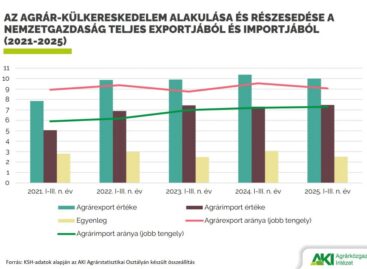Rabbit meat is back in the spotlight: domestic consumption is booming, but exports remain the driving force
Since the 2000s, the structure of domestic rabbit farming has fundamentally changed: the classic backyard models have gradually been replaced by small-scale and then industrial-scale farms. As a result, the demand for rabbit meat has declined for many years, and backyard rabbit farming has almost completely disappeared from the Hungarian countryside. However, a turnaround has occurred in recent years – according to the chairman of the Rabbit Product Council, domestic rabbit consumption is practically doubling every year – writes the Agrárszektor.
New momentum, old tradition
 The positive trend began around 2017, when targeted communication campaigns were launched to promote rabbit meat. As a result, rabbit products are now stably present on the shelves of supermarket chains, and backyard rabbit farming has also begun to spread again. Currently, the domestic market consumes 400–500 tons of rabbit meat annually – this is still a modest amount, but the continuous growth is encouraging.
The positive trend began around 2017, when targeted communication campaigns were launched to promote rabbit meat. As a result, rabbit products are now stably present on the shelves of supermarket chains, and backyard rabbit farming has also begun to spread again. Currently, the domestic market consumes 400–500 tons of rabbit meat annually – this is still a modest amount, but the continuous growth is encouraging.
Export dominance remains
Domestic rabbit breeding remains export-oriented: 96–97 percent of production goes to foreign markets. Hungary regularly ships to 17 countries, with Germany, France, Switzerland, Spain and Italy among its largest partners. In addition, Hungarian rabbit products were also in demand in the Middle East, where they became competitive due to their excellent meat quality.
Difficulties and challenges
The Covid pandemic, followed by the war situation and drought, caused serious economic difficulties for players in the sector. The biggest challenges include the rise in energy and feed costs, as well as the shortage of labor – especially in large-scale production.
Backyard breeding in a renaissance
Backyard rabbit breeding has gained momentum again. According to Róbert Juráskó, president of the product council, rabbits are one of the easiest pets to keep. A female rabbit can raise up to 40–45 offspring per year, which is a significant source of protein for households.
Related news
Agricultural foreign trade surplus decreased in the first three quarters of 2025
🎧 Hallgasd a cikket: Lejátszás Szünet Folytatás Leállítás Nyelv: Auto…
Read more >Univer is building on export-led growth
🎧 Hallgasd a cikket: Lejátszás Szünet Folytatás Leállítás Nyelv: Auto…
Read more >Hungarian exports are gaining new momentum: medium-sized companies are increasingly managing exchange rate risk and opening up to new markets
🎧 Hallgasd a cikket: Lejátszás Szünet Folytatás Leállítás Nyelv: Auto…
Read more >Related news
Christmas shock in commerce: for the first time, we can pay with bank cards in fewer places
🎧 Hallgasd a cikket: Lejátszás Szünet Folytatás Leállítás Nyelv: Auto…
Read more >Hungarian Confectionery Manufacturers Association: trends in 2025 and prospects for 2026
🎧 Hallgasd a cikket: Lejátszás Szünet Folytatás Leállítás Nyelv: Auto…
Read more >Most grocery chains will be open until noon on December 24th
🎧 Hallgasd a cikket: Lejátszás Szünet Folytatás Leállítás Nyelv: Auto…
Read more >






